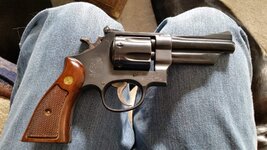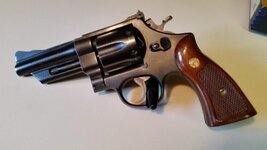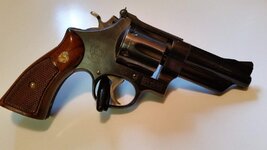Hey all,
My wife and I just received our first revolver from a friend. Its a S&W Model 28-2 and from what we were told its just been sitting in a box. I've never owned or even held a revolver till now and I'm honestly just looking for some guidance on taking care of it, what kind of condition is it in, what could it worth if we decide to sell?
Also, I have read in multiple places that this .357 can also fire .38 special, is there truth to this? Is there any other caliber it can shoot?
Thanks in advance for any tips, tricks and advice.



My wife and I just received our first revolver from a friend. Its a S&W Model 28-2 and from what we were told its just been sitting in a box. I've never owned or even held a revolver till now and I'm honestly just looking for some guidance on taking care of it, what kind of condition is it in, what could it worth if we decide to sell?
Also, I have read in multiple places that this .357 can also fire .38 special, is there truth to this? Is there any other caliber it can shoot?
Thanks in advance for any tips, tricks and advice.














